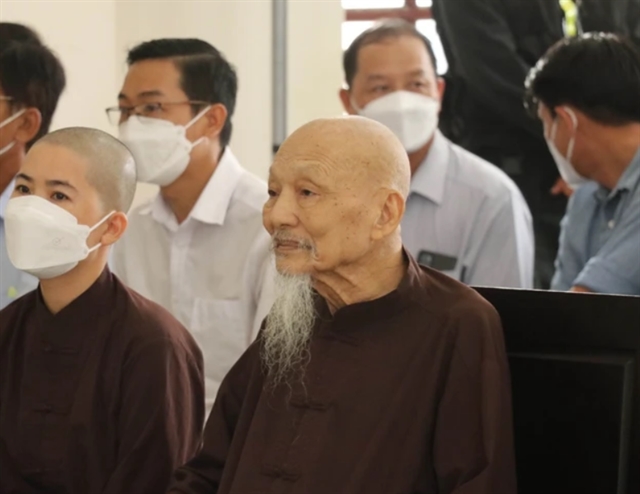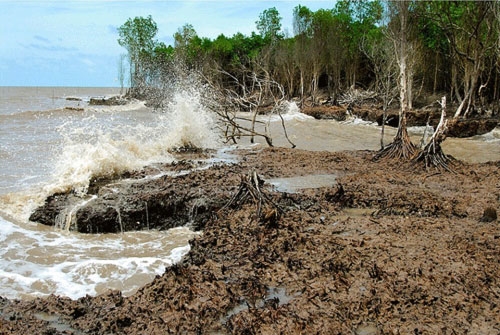 Society
Society

Việt Nam is feeling strong climate change impacts to production and people’s lives.
 |
| Việt Nam is feeling strong climate change impacts to production and people’s lives.— Photo moitruongvadoisong.vn |
Hà Nội — Việt Nam is feeling strong climate change impacts to production and people’s lives.
In the last few years, drought, unseasonable rain, downpours, long hot spells and extremely cold weather have seriously affected farm production and people’s daily lives.
During the 2015 and 2016 dry seasons, the average rainfall in the South Central region and Tây Nguyên Central Highlands was about 60-70 percent of the average many years ago.
In August 2015, the northern coal mining province of Quảng Ninh was devastated by heavy rains of up to 1,500 mm of water for ten straight days.
During this year’s dry season, the Mekong Delta provinces experienced severe drought. The water level of the Cửu Long (Mekong River) was reported at the lowest level ever in the past 90 years. As a result, salt water infiltration came two months earlier than usual. In some localities, salt water infiltration was reported 120 kms inland – the worst ever in Việt Nam’s history.
In 2015-2016, due to heavy infiltration of sea water, farmers in the three central provinces of Ninh Thuận, Bình Thuận and Khánh Hòa could not plant rice on 80,000 ha. Some 500,000 ha of subsidiary crops were adversely affected.
According to Nguyễn Văn Tính, deputy director of the General Department of Irrigation, Vietnamese water resources are now under the management of three different ministries: the Ministry of Natural Resource and Environment (MONRE), the Ministry of Agriculture and Rural Development (MARD), and the Ministry of Industry and Trade (MOIT).
In Tính’s opinion, this complicated water management policy has become a stumbling bloc to successful water irrigation activities, particularly during the rainy or drying seasons.
Hoàng Văn Thắng, MARD Deputy Minister and the director of the General Department of Irrigation, thinks it’s time for Việt Nam to restructure agriculture, its primary industry, in the context of climate change.
“The irrigation sector should switch from a State-subsidized operation to the market-operated economy”, Thắng said. “This is the only way to use water efficiently and effectively."
Chu Phương Chí, of the Việt Nam Water Irrigation Union said “Not only rice plants need water. Industrial plants and subsidiary crops also need water. Water is also an essential element in people’s daily lives."
To adapt to climate change, many Vietnamese irrigation experts note the importance of encouraging the participation of all social sectors in adopting the idea that water is a kind of commodity that everyone needs to preserve.
“If we consider water a commodity, we have to encourage the whole society, including enterprises, to adopt the idea that water is indispensable to our lives and it is closely associated to social security and food safety,” Deputy Minister Thắng said.
According to the General Department of Irrigation, the draft Law on Water Irrigation which is now on the table at the National Assembly has laid out a road map of a price mechanism for irrigation water. Under the draft law, the construction, exploitation and management of irrigation projects will happen in the form of public-private partnerships. The mechanism of water irrigation fees will be changed gradually to a service charge irrigation model.
The service charge mechanism will help change people’s awareness about using the water more efficiently. It will also encourage organizations or individuals to invest in irrigation schemes. said Tinh, the deputy director of the General Department of Irrigation. Poor people will continue to benefit from government subsidies.
Tính also pointed to the importance of State management in the planning and management of water resources to coordinate water irrigation management nationwide. —VNS
| Việt Nam has more than 6,600 water reservoirs, 10,000 electric pumping stations, 5,500 major water irrigation sluices, 234,000 km of canals and almost 26,000 km of levees. The irrigation system can irrigate up to 7.5 million ha of rice cultivation, plus 1.7 million ha of subsidiary and industrial crops. |









